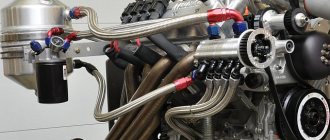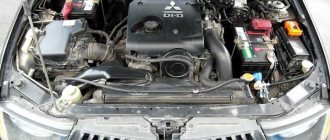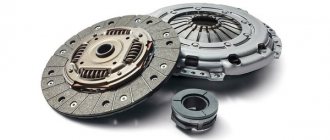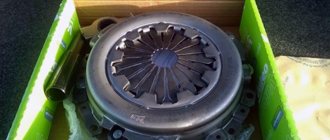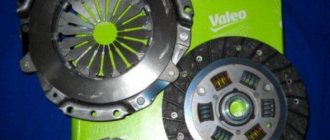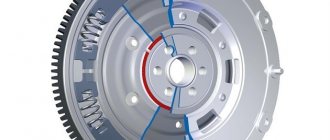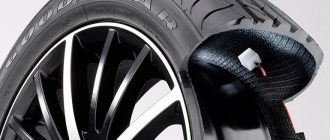Those who have used electric oil radiators may have many complaints about them: they supposedly “dry the air”, “smell bad”, etc. But you can’t take away their main advantage: a convector or oil radiator can simply be brought into the room, connected to electricity, and the room that was cold will become warm.
Electric oil heating radiators are indispensable in the country house, in the garage, at home in winter, when central heating radiators do not provide enough heat to heat the home. In general, in all those cases when you want to warm up, but the housing office and the municipal boiler room are not able to help you.
Oil heaters (heating radiators)
Externally, an oil-type radiator is similar to a conventional sectional battery that hangs under the windows in apartments and houses. The only difference is the operating principle and the energy carrier - the portable radiator operates from the electrical network, and not from the central heat supply from the boiler room.
Design and principle of operation - how does it work?
The difference between an oil radiator and analogue stationary heating devices is that it operates from the mains. If in conventional batteries there is water inside the sections, then here there is mineral oil. When plugged into the network, such oil boils, heating the walls of the device, which, in turn, heat the room with warm air.
The operation of the equipment is ensured by:
- Thermostat.
- heating element.
- Control panel with plastic knobs and incandescent thermometer.
- A network cable that provides power supply.
The body of the product is made of metal, which is coated on the outside with a special anti-corrosion and anti-shock powder coating. It is this composition that helps to avoid surface damage to the plates with further deformation.
Each section of an oil-type radiator has a hermetic, dense base that does not allow the seams to separate when the oil heats up.
Advantages and disadvantages
Depending on the manufacturer, such a device has certain design features: an autonomous controlled thermostat or a touch control panel. But, in any case, the heating element has a number of advantageous characteristics, including:
- silent operation, no extraneous sounds occur when the oil is heated;
- high level of heat transfer - efficiency;
- long service life without the need for repairs - a guarantee of 5 years or more;
- does not emit chemical or other unpleasant odors when heated;
- Easily transported from room to room thanks to the available wheels;
- does not contribute to dry air.
Among the disadvantages, it is important to note such features as the long period from heating the heating element to the supply of heat to the space, as well as the large weight of the product. However, such disadvantages are relative - weight is not a problem, since there are wheels, and after heating, the temperature lasts longer than when using other heating devices.
Devices with a built-in fan heat the room faster; literally within 1-2 minutes after switching on, the radiator heats the room.
Is it dangerous? Safety precautions
Existing warnings regarding the toxicity of the oil in the radiator are unfounded.
Modern devices have double or triple protection, which, even with a direct impact, does not violate the integrity of the coating.
Hot oil is indeed under pressure inside and is a flammable component. But the degree of protection of the heater is so high that with proper operation for many years no negative aspects will be noted.
Each oil-type radiator has a glow sensor that is activated when heated to 60 degrees. Above this temperature, heating does not occur - the heating element turns off.
Engine oil cooler: what is it for?
First of all, a significant increase in engine load means that in some cases there is a need to additionally cool the engine oil. The oil often overheats precisely when the engine spins up to maximum speed and operates in this mode for a long time.
Also, an aggressive driving style (frequently spinning the engine to the cut-off point) can lead to oil overheating. In this case, the lubricant simply does not have enough time to cool after lowering the speed.
If the engine is forced, in this case the oil temperature deserves increased attention. It is not difficult to guess that the tuned engine was not originally designed for such loads. Naturally, the level of heat release also increases, while the heat sink remains standard.
Please note that the above information does not mean that any engine will overheat after boosting or operating at maximum loads. The fact is that some engines are predisposed to overheating of the oil and the internal combustion engine itself, while others are not. In this case, at least additional control of the oil temperature will not be superfluous.
To do this, you can initially install a temperature and oil pressure sensor in the engine. As you know, many cars are not equipped with such sensors as standard. All the driver can count on is the oil pressure warning light on the instrument panel coming on when the oil pressure drops significantly.
At the same time, it is not necessary to chase expensive high-precision devices such as Defi, etc. To monitor the overall picture of what is happening in the oil system of the internal combustion engine, a cheap or medium option is quite suitable. We also add that experts recommend installing not only a temperature sensor, but also an oil pressure sensor.
The reason is that after heating, the oil dilutes, which naturally leads to a drop in pressure in the system. In this case, the standard emergency light may not light up, since it usually lights up at critical values.
However, do not forget that even if the oil pressure light is not on, at low pressure the engine wear is colossal. It turns out that thanks to the presence of a separate sensor, it becomes possible to detect the problem in time and stop the engine in a timely manner.
Let us add that the permissible oil temperature is normally heated to + 100 degrees Celsius. Moreover, for some engines, even heating up to 110 degrees is already high and may not pass without consequences, while others can easily survive even 140-150. However, in most cases, the consequences of severe overheating of the engine oil are quite serious.
First, the oil itself dilutes, that is, its protective and lubricating properties are lost. In this case, the engine is subject to severe wear. Also, liquid oil is heavily consumed by waste, and overheated lubricant simply burns and cokes the engine.
Moreover, after overheating, the oil should be changed immediately, since further operation of the internal combustion engine with such a lubricant significantly increases engine wear, leads to sticking of the rings, the appearance of oil smoke from the exhaust pipe and rapid overhaul.
Classification and main characteristics
There are many oil-type radiators, which differ in the number or presence of additional options - built-in mechanisms, fans or place of operation.
Wall mounted
Models that can be attached to a vertical surface are called wall-mounted. They tend to be flatter and have non-protruding sections that do not interfere with the bracket's ability to catch on the hanging hooks. Often such modifications are universal - they have a place for screwing on wheels, which allows you to install them on the floor in the right place.
Floor-standing
This type is the most common and is popular due to its portability: if it is necessary to heat several rooms, it can be reinstalled with little physical effort.
The heat transfer of such a floor-mounted device is the highest. There is a separate subtype of floor models - baseboard heaters. They are installed in the corner of the wall and floor in place of the baseboard. They have a long and narrow shape.
Tabletop
Modifications that can be placed on a table are small in size and the same weight. They are designed to provide additional heating to a small room. Also used in the form of heating a children's room or crib.
The number of sections for tabletop types is no more than 5; the height of such sections is half that of floor ones.
For cots
Radiators designed for heating children's rooms differ, in most cases, in their appearance and mobility.
These can be either wall or tabletop modifications with bright colors. A significant advantage of using such a heating element is that the air does not dry out, and the humidity during battery operation is at least 60%, which is important for children who are often ill.
Children who often suffer from acute respiratory viral infections or chronic lung diseases - bronchitis, laryngitis, tracheitis - need constant air humidification. Fans that operate on the principle of a hair dryer cannot be used to heat a room - they heat up and move air around the room.
Operating principle of oil heaters
The device works on the following principle: a built-in heating element heats a vessel with mineral oil poured into a special cavity in the radiator. The oil heats up evenly, and its heat increases the temperature of the metal body - the radiator begins to heat the air in the room. The design is sealed, the device is equipped with thermostats that prevent the oil from boiling: when a certain temperature in the tank is reached, the device turns off for a while, then resumes operation. Also, when the pressure rises critically, some of the spirals close, and some of the oil is discharged into an unheated reservoir.
Important! It is necessary to ensure that the device standing on the floor does not tip over: this will disrupt the circulation of mineral oil, which can damage the heater.
When purchasing an oil heating radiator with a thermostat, you should pay attention to the characteristics of convection channels, which accelerate air circulation, increasing the efficiency of the heater. The general operating principle of such a device makes it stand out from a number of other heating and climate control devices, making it as convenient as possible for use at home.
Tips and tricks for choosing
Radiators are produced with different power, which, among other things, depends on the number of sections: the more there are, the larger the heating area. The disadvantage of increasing the number of sections is the need to provide more space, which is difficult in small rooms. Although, such parameters for assessing characteristics are individual and this does not affect the mobility of equipment. In general, when purchasing an oil-type heater, pay attention to several features.
Continuous operation of the oil battery – 3 days.
Electricity consumption and the most energy efficient range
The convenience of oil radiators is obvious, but some buyers are confused by the energy consumption of such an installation - how much does the battery use per day? The power of the device is selected according to the size of the heated room. On average, heating 10 sq/m of space requires 1 kW of energy, if it is a living space with ceilings of 2.75-3 m. If the ceilings are higher, the calculation is carried out:
- The area of the room is calculated - the length is multiplied by the width.
- The volume of the room is determined by multiplying the area by the height.
- Divide the resulting number by 25 (because 25 m3 produces 1 kW).
- The result obtained is the heater power we need. If the quantity is very large, then you need to buy several radiators, which in total will provide the required energy
So, according to the above calculations, it turns out that for a room of 20 square meters. m, a 1.5 kW heater is suitable.
Dimensions and appearance (flat, small)
The height of one section is from 580 to 700 mm, width is 362-650 mm. The depth of the section to the central part is 90-290 mm. The number of such sections is 5-12, the most popular models with 9 or 11. They are flat, wide or narrow in shape. The smallest ones are plinth ones, their length is up to 1.5 meters, diameter is 50-90 mm.
The surface temperature differs from the maximum heating of the oil itself. So, if the oil is heated to a temperature of 60 degrees, then the surface of the sections heats up to 95°C.
Control
The control unit for oil convectors is located on the side of its end part. As a rule, this is a plastic panel with switches that control:
- operating modes;
- light indicators;
- humidifiers;
- shutdown sensors when the device overheats;
- duration of operation of the TEN;
- air heating temperature;
- Energy consumption;
- fan operation;
- duration of rest mode during continuous work.
Some modern models have LCD monitors with touch controls even from a distance.
Manufacturer and price - how to choose?
The range of products for heating autonomous rooms is large. Almost any household store has several manufacturers, but according to customer ratings, the most frequently purchased are:
- Vitesse VS-877.
- General Climate.
- Timberk.
- DeLonghi.
- Bimtek.
The price of radiators, depending on the number of sections and the manufacturer (domestic or imported), starts from 3 thousand rubles to 30 (for domestic needs, other amounts for industry).
Advantages and disadvantages of using oil-based appliances
Oil radiators have many advantages over other heaters:
- during operation they do not absorb oxygen - they do not dry out the air in the room;
- They operate silently and do not emit any foreign odors;
- mobile and relatively small in size;
- affordability: different oil radiators have different prices; you can find both expensive and budget devices. The average cost varies from 1.5 to 10 thousand rubles.
- the tightness of the vessel with oil, static stability and moderate energy consumption increase the safety of using an oil radiator in comparison with other heaters.
An oil radiator can be installed in a children's room
Like any device, it also has weaknesses, the main one being the slow heating of the room. The built-in fan will help speed up the process, but this model will also cost more. Recent improvements to the devices include built-in air humidification systems and an electronic timer, with which you can regulate the switching on and final switching off of the heater.
When choosing a device, in addition to its power, you should pay attention to the presence of a thermostat. Most models are equipped with this device, but it would be a good idea to double check. Also pay attention to the presence of wheels on the device: if it has many sections, then due to its large weight it will be difficult to move it without rollers.
For industrial purposes or for home: household or industrial
If for domestic needs there are a large number of offers at different prices, then for industry there is a separate line of products that differ in power, size and, accordingly, price. The maximum number of sections of one oil radiator is 14. For industrial premises, it is important not only their required number, but also their correct location. Thus, suspended models heat the air faster, and the power of the device must be at least 2.5 kW.
What systems provide security?
Overheat protection All oil radiators without exception are equipped with an overheat protection system. If the heating temperature exceeds the permissible temperature, the temperature sensor will operate and the device will automatically turn off. There is no need to monitor the operation of the heater every minute. You can safely leave it on overnight. But manufacturers do not recommend leaving a working device unattended for more than 24 hours.
Rollover protection. The oil cooler can only be operated in a vertical position. This is due to the peculiarities of its design and the operation of the heating element in oil. It is strictly prohibited to place the device on its side or tilt it. Almost all modern models of oil heaters are equipped with a vertical deviation sensor. This sensor will turn off the device if it is incorrectly installed or accidentally tipped over.
Installation
Installation of the heater does not require special skills and knowledge. If it is a hanging model, it is mounted on brackets that are pre-installed at the required distance from each other. If the model is mobile on wheels, then all that is needed for installation is to determine the safest place near the outlet. It is worth considering that there should be no obstacles in the heater’s path - curtains, sofas or chests of drawers. It is best to install it in the central part of the room in the first 2-3 hours of operation. After the space has warmed up, it is moved to a more comfortable distance - near a wall or fireplace.
Mayevsky tap or valve?
You can get by with a Mayevsky crane, but then you will need one more protection.
An external emergency thermostat with an operating temperature in the region of 80-90C is mounted on the first section of the battery (counting from the heating element). Moreover, it is connected to the power supply of the heating element itself.
When the heating element’s original thermostat does not work and the water begins to approach the boiling point, the emergency temperature sensor operates. It interrupts the voltage supply and saves the battery from explosion.
Which is better - an emergency valve or an external thermostat? It is still preferable to have a valve.
The design is simpler and more reliable.
Oil
Transformer oil is a dielectric with excellent thermal conductivity.
It retains its properties at temperatures down to -45 degrees. Produced from oil by distillation, it has slightly different characteristics. For oil batteries, mineral oil is used, which is similar to transformer oil. Filling the radiator with synthetic gear oil will contribute to its noisy operation - it will begin to make noise and rattle due to the fact that the viscosity is lower and the intensity of convective flows is higher.
It is impossible to use a mixture of oils of different origins for radiators due to the interaction of the different additives present, which after heating it is not known how they will behave. The composition may either curdle or precipitate or thicken. Adding the missing oil is done with identical material available in the device.
Why install a radiator on engine oil?
A very simple answer - to cool the lubricant ! But why cool it is a more complicated question.
Let's start with the fact that in 90% of cases, as I wrote above, the car has enough coolant that circulates through the main radiator (the one in front, under the decorative grille) and the heater radiator (which is in the cabin). Heat dissipation, say, on an ordinary foreign car (or a class B - C car) is sufficient.
BUT! There are difficult cases when this is not enough, and then they start connecting oil cooling. This happens mainly on loaded engines.
Some believe that “oil injectors” and an oil cooling radiator work on the same principle, that is, they cool the engine with oil. BUT this is extremely wrong!
Oil injectors work mainly to cool the piston, that is, they take additional heat from the engine so that it does not lose its geometry, I have a useful video about them, I recommend everyone watch it.
But the cooling radiator takes the temperature away from the lubricant so that it does not lose its properties ahead of time.
Which is better: oil or convector
When considering the advantages of convectors or oil radiators, it is worth paying attention to such features as power consumption, dimensions and additional functions. If the heater is needed for regular use, then it is better to choose oil models. For periodic use in insufficiently warm rooms, you can buy convectors with a top supply of warm air.
Heating an apartment or house is a task that arises quite often even with centralized heating. This is due to insufficiently warm stationary radiators or poor location of the apartment, damp weather before the heating season or a desire to better warm up the child’s room. In any case, oil batteries will help ensure the desired temperature in residential areas.
Why a cooling radiator may be needed in the lubrication system
As the power of automobile engines increased, engineers were faced with the critical problem of removing the ever-increasing excess heat from the engine. The first step towards solving this problem was the appearance of additional cooling fins on the engine sump. However, fins could not radically solve the problem. On trucks, as well as on highly accelerated passenger car engines, the fins on the oil pan did not cope with the task. Overheated oil lost viscosity, the pressure in the system dropped, and the driver had to slow down to reduce the release of heat. Overheated oil prematurely lost its properties: additives disintegrated, and deposits formed on engine parts. It was possible to provide a long service life to a forced engine only through effective heat removal.
Air type oil cooler is easy to install as optional equipment
In modern cities, daily standing in traffic jams leads to a similar effect, which is why the design of many cars of the latest generations includes a radiator for cooling the engine oil.
